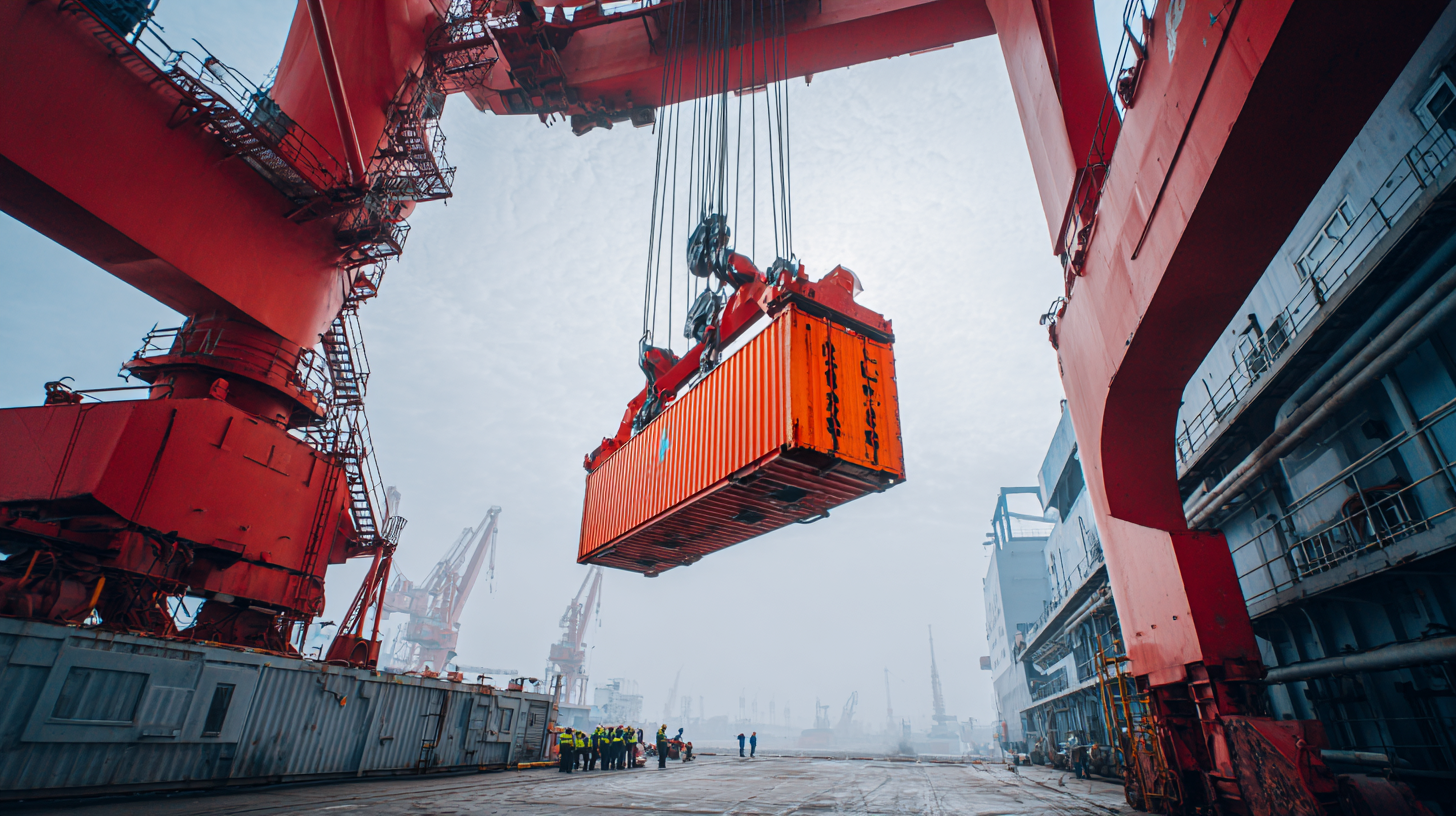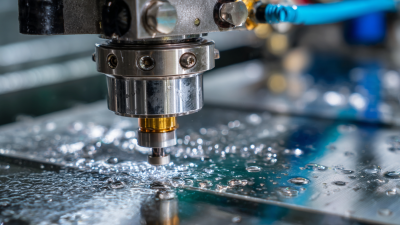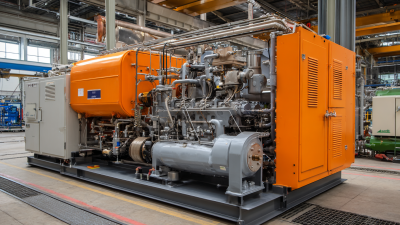Unlocking Efficiency: How Dock Hoists Revolutionize Maritime Operations and Improve Safety
In the ever-evolving maritime industry, efficiency and safety continue to remain paramount. Recent reports indicate that the global dock hoist market is expected to reach $1.2 billion by 2027, growing at a CAGR of 5.4% as businesses increasingly adopt advanced lifting solutions to enhance operational productivity.
Dock hoists play a crucial role in streamlining the loading and unloading processes at ports, significantly reducing turnaround times and facilitating quicker vessel departures.
According to Dr. Samuel Thatcher, a leading expert in maritime logistics, “The integration of dock hoists not only accelerates operations but also sets a new standard for safety in the maritime sector.” His insight highlights the pivotal shift towards automated lifting systems that decrease manual handling, thereby minimizing the risk of workplace injuries. With the implementation of innovative technologies in dock hoists, companies are witnessing lower operational costs and improved service delivery, marking a transformative milestone in their maritime operations.
As the industry gears towards greater automation, understanding the strategic advantages offered by dock hoists becomes increasingly essential. This article will delve into how these vital tools are not only revolutionizing maritime operations but also enhancing safety protocols, setting the stage for a safer and more efficient future in the shipping industry.

Innovative Dock Hoist Designs: Spearheading Efficiency with Up to 30% Time Savings in Loading Operations
Innovative dock hoist designs are transforming maritime operations by streamlining loading procedures and significantly reducing turnaround times. With advancements in engineering and materials, these hoists can now deliver up to 30% time savings in loading operations. This efficiency is crucial in the competitive maritime industry, where time is money, and optimizing every phase of the operation can lead to enhanced profitability.
The cutting-edge features of modern dock hoists include automated systems, real-time monitoring, and ergonomic designs that minimize manual labor. Such innovations not only speed up the loading process but also improve safety for workers by reducing the risks associated with heavy lifting and manual handling. As a result, ports and terminals can expect increased throughput and fewer accidents, making innovative dock hoist designs a cornerstone of modern maritime efficiency.
The Impact of Automated Dock Hoists on Reducing Labor Costs by 25% in Maritime Industries
The advent of automated dock hoists has marked a significant transformation in maritime operations, particularly in the realm of labor cost efficiency. By streamlining the loading and unloading processes, these advanced systems have been shown to reduce labor costs by an impressive 25%. This reduction is primarily achieved through minimizing the need for manual intervention, allowing workers to focus on more complex tasks that require human oversight, thus optimizing workforce allocation.
Moreover, the implementation of automated dock hoists not only enhances operational efficiency but also bolsters safety standards within the maritime industry. With fewer personnel involved in high-risk activities related to cargo handling, the likelihood of accidents diminishes considerably. This not only protects the well-being of workers but also mitigates potential disruptions that can arise from workplace injuries. As maritime industries continue to evolve, the integration of these technologies emerges as a crucial strategy for improving both cost-effectiveness and safety protocols.

Enhancing Safety Standards: Dock Hoists and the Reduction of Workplace Accidents by 40%
The advancement of dock hoist technology has significantly enhanced maritime operations, particularly in elevating safety standards. A research report from the Maritime Safety Administration reveals that the implementation of modern dock hoists has led to a staggering 40% reduction in workplace accidents across docks worldwide. This improvement not only protects the workforce but also increases operational efficiency, allowing for faster cargo handling and minimizing downtime.
Tips for efficient dock hoist use include regular maintenance checks to ensure equipment reliability and safety. Additionally, adopting best practices such as proper training for operators and implementing a systematic scheduling of tasks can greatly enhance safety measures. According to industry experts, organizations that prioritize safety training see a 60% decrease in accidents related to equipment misuse.
Moreover, investing in state-of-the-art dock hoists that incorporate safety features like automatic shutoff systems and load limit sensors can further mitigate risks. The integration of smart technology in dock operations has been shown to streamline workflows, ensuring that every lift is executed with precision. This emphasis on safety not only fosters a more secure working environment but also boosts overall productivity in maritime operations.
Real-Time Data Integration: How Dock Hoists Utilize IoT for Streamlined Operations and Improved Decision-Making
The integration of IoT technology into dock hoists is transforming maritime operations, enhancing both efficiency and safety. Real-time data integration allows dock hoists to communicate seamlessly with various systems, providing operators with immediate access to critical information. According to a report from the International Marine Organization, real-time data can reduce operational delays by up to 30%, significantly improving turnaround times in port operations. This instantaneous flow of information empowers decision-makers to respond promptly to changing conditions, optimizing overall operational efficiency.
Moreover, the use of IoT-enabled dock hoists contributes to enhanced safety standards. With integrated sensors monitoring load weights and environmental conditions, these systems can alert operators to potential hazards before they escalate. A study from the Ports and Maritime Association highlights that the implementation of smart equipment has led to a reduction in workplace accidents by as much as 40%. By leveraging real-time data for predictive maintenance and operational oversight, dock hoists are not only streamlining processes but also creating safer working environments for personnel in the maritime industry.

Case Studies: Successful Implementations of Dock Hoists Leading to Increased Vessel Turnaround Times by 20%
The introduction of dock hoists in maritime operations has proven to be a game-changer, significantly enhancing vessel turnaround times. Case studies across various ports showcase remarkable improvements, with some operations reporting a 20% increase in efficiency since the implementation of these systems. By streamlining the loading and unloading processes, dock hoists minimize idle time and optimize workflow, allowing vessels to stay on schedule and reducing operational costs.
When integrating dock hoists, consider the following tips to maximize effectiveness. First, ensure proper training for the crew to operate the hoist safely and efficiently. Familiarity with the equipment minimizes the risk of accidents, thereby fostering a safer work environment. Secondly, regular maintenance checks are essential to ensure that the hoists function optimally. Scheduling maintenance before peak operational periods can prevent unexpected downtimes. Finally, gather data from each operation to assess the impact of dock hoists and identify areas for further improvement.
Real-world examples shed light on the transformative effect of dock hoists on maritime operations. In one case, a busy shipping terminal employed these systems, resulting in a decrease in vessel dock time and an increase in overall throughput. Similar successes can be replicated in other ports, paving the way for a more efficient and safer maritime industry.
Unlocking Efficiency: How Dock Hoists Revolutionize Maritime Operations and Improve Safety
| Port Location | Vessel Type | Turnaround Time (Hours) | Previous Turnaround Time (Hours) | Efficiency Improvement (%) | Safety Incidents Reported |
|---|---|---|---|---|---|
| Port A | Container Ship | 24 | 30 | 20% | 2 |
| Port B | Bulk Carrier | 18 | 22 | 18% | 1 |
| Port C | Ferry | 12 | 15 | 20% | 0 |
| Port D | Oil Tanker | 30 | 40 | 25% | 3 |
Related Posts
-

Unlocking Precision: How Water Jet Cutting Systems Revolutionize Metal Fabrication with 0.005-Inch Accuracy
-

The Ultimate Guide to Understanding Lift Docks and Their Importance in Modern Logistics
-

The Ultimate Guide to Choosing the Right Disk Mower for Your Lawn Care Needs
-

Understanding the Benefits of Jet Cut Technology in Modern Manufacturing
-

The Ultimate Guide to Understanding How a Water Jet Head Transforms Industrial Cutting
-

Understanding the Benefits of Water Jet Cutting Machines in Modern Manufacturing

